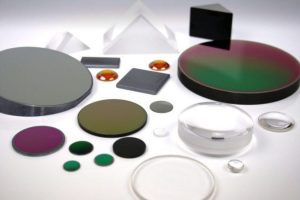Eyes in the Sky: Space Technology for Earth’s Energy Efficiency
2nd Jan 2024 The innovations that float overhead in space offer many benefits to our lives on Earth. Everyday, basic conveniences, like the weather forecasting that guides our daily attire choices, those all-important video and phone calls with loved ones, essential internet connectivity for work and leisure and crucial broadcasting to ensure we stay informed on the latest headlines, are all made possible by state-of-the-art satellites that are always hard at work throughout the universe. However, beyond these familiar operations, celestial systems also play a prominent role in helping us learn more about sustainability and conservation. In this blog, we explore the profound impact of space tech on improving our Blue Planet’s energy efficiency.
The innovations that float overhead in space offer many benefits to our lives on Earth. Everyday, basic conveniences, like the weather forecasting that guides our daily attire choices, those all-important video and phone calls with loved ones, essential internet connectivity for work and leisure and crucial broadcasting to ensure we stay informed on the latest headlines, are all made possible by state-of-the-art satellites that are always hard at work throughout the universe. However, beyond these familiar operations, celestial systems also play a prominent role in helping us learn more about sustainability and conservation. In this blog, we explore the profound impact of space tech on improving our Blue Planet’s energy efficiency.
With a rich history of engagement in the aerospace and defence sectors stretching over three decades, our knowledge lies in the supply of fine-tuned optics that are integral to the implementations mentioned above. Moreover, our trusted know-how also includes thermography, a vital component for spacecraft dedicated to mapping the globe’s heat loss.
Seeing The World Through A Different Lens
 As Governments convened at Expo City in Dubai last year for COP28 to deliberate on strategies for mitigating and adapting to future climate change, a silent observer monitored from a higher perspective. This distant spectator, however, wasn’t relying on visible wavelengths for its inspection; instead, it utilised the infrared (IR) spectrum to assess the thermal energy from the vicinity around the site. This closely mirrored the subjects under discussion inside, such as the urban heat island effect, which occurs when heat in built-up areas is trapped at lower levels, resulting in elevated temperatures.
As Governments convened at Expo City in Dubai last year for COP28 to deliberate on strategies for mitigating and adapting to future climate change, a silent observer monitored from a higher perspective. This distant spectator, however, wasn’t relying on visible wavelengths for its inspection; instead, it utilised the infrared (IR) spectrum to assess the thermal energy from the vicinity around the site. This closely mirrored the subjects under discussion inside, such as the urban heat island effect, which occurs when heat in built-up areas is trapped at lower levels, resulting in elevated temperatures.
The far-off onlooker in this scenario was HotSat-1, a satellite constructed in the UK and hailed “the globe’s thermometer.” According to reports [1], HotSat-1 indicated that the roads and concrete pavements surrounding the premises emitted a vibrant red glow due to solar heat absorption. Conversely, a park situated in the lower left corner of the shot exhibited a cooler blue hue, attributed to the lower temperature of the vegetation.
From The Sky Comes Solutions
Prior to its remote attendance and participation in the 28th United Nations Climate Change Conference, HotSat-1 was engaged in assessing temperature variations in diverse locations. This included monitoring details in Chicago, such as the movement of a train through the night, observing an airport in Albuquerque where planes around the terminal could be counted, analysing the daytime heat and gradual nighttime release from tarmac and concrete roads in Las Vegas, and tracking active fronts of wildfires in the Northwest Territories [2].
The satellite’s capacity to evaluate inefficient heat dissipation in our infrastructure is noteworthy. The ability not only delivers environmental advantages but has economic promise, too. Leveraging the statistics provided by HotSat-1, planners, construction professionals, and other leaders can gain invaluable insights into areas where buildings lose heat. The information gained empowers them to adapt building processes and materials for enhanced efficiencies.
 The orbiter, fabricated by Surrey Satellite Technology Limited (SSTL) and launched by California-based SpaceX in June, can detect thermal variances in hot and cold features as small as 3.5m across [2]. It is outfitted with a cutting-edge mid-wave infrared (MWIR) imager, boasting an exceptional 3.5m resolution. The sensor stands as the most advanced commercial thermal imaging device currently in orbit [2] and is one of eight planned constellations that are scheduled to be set in motion.
The orbiter, fabricated by Surrey Satellite Technology Limited (SSTL) and launched by California-based SpaceX in June, can detect thermal variances in hot and cold features as small as 3.5m across [2]. It is outfitted with a cutting-edge mid-wave infrared (MWIR) imager, boasting an exceptional 3.5m resolution. The sensor stands as the most advanced commercial thermal imaging device currently in orbit [2] and is one of eight planned constellations that are scheduled to be set in motion.
Regrettably, the realm of space research is not without its hiccups and, unfortunately, midway through composing this post, updates emerged that HotSat-1 had “stopped working [3]“. The cause of the failure remains unclear at the time of writing. Despite the setback, the prospect the tech holds is genuinely remarkable for the evolution of energy efficiency, especially as we strive toward achieving net-zero goals.
In the Heat of Discovery
While HotSat-1 contributed valuable intelligence, it wasn’t the sole thermal imager enhancing our understanding of planetary dynamics. Notably, NASA’s Goddard, a premier flight complex housing a vast community of scientists, engineers, and technologists, has successfully developed thermal imaging devices with utilisation in data collection, particularly in studying happenings like wildfires.

In 2019, Goddard’s Compact Thermal Imager (CTI), comprising a strained-layer superlattice (SLS)-based IR camera, formed the basis for an instrument deployed aboard the International Space Station. The device captured over 15 million IR images of Earth (not pictured) in two spectral bands [4]. Following the triumph of CTI, the researchers initiated the growth of the next-generation CTI-2, again incorporating sophisticated SLS-based tech.
In their published paper, the inventors expressed that the: “Unexpected wealth of data sparked considerable scientific interest, leading to further exploration of this imaging capability with a focus on more precise monitoring of terrestrial fires and other surface phenomena [5].” To achieve this, a technique was devised to integrate “specific bandpass filters directly onto the SLS detector hybrid assembly [5]“. The resulting CTI-2 camera system boasts two filters at 4 and 11µm, accompanied by a second detector assembly featuring six filter bands spanning 4-12µm [5].
IR Optical Components for Space Exploration
IR technology leads the way for these outer-space imaging approaches, and optics, specifically IR optical components, are an imperative part of their success.
 At Knight Optical, this intersection of thermography and space exploration seamlessly aligns with our extensive expertise in both the aerospace sector and the meticulous development of thermal imaging technologies – be it in airborne applications or on land. With a well-established track record, our comprehensive portfolio of IR optical components has earned trust across diverse industries and is recognised for the impeccable quality and accuracy they deliver.
At Knight Optical, this intersection of thermography and space exploration seamlessly aligns with our extensive expertise in both the aerospace sector and the meticulous development of thermal imaging technologies – be it in airborne applications or on land. With a well-established track record, our comprehensive portfolio of IR optical components has earned trust across diverse industries and is recognised for the impeccable quality and accuracy they deliver.
If your needs span Filters, Windows, Lenses, or Mirrors, or if you’re in search of project-specific IR substrates like Germanium, Zinc Selenide (ZnSe), or Silicon (Si), rest assured your order, whether customised or off-the-shelf, is in capable hands at Knight Optical. Our commitment to excellence ensures your requirements are met with unparalleled precision and reliability, reinforcing our position as a reliable partner in advancing thermal imaging and space-borne systems.
Stepping Towards Sustainability
As we reflect on the setbacks in the ever-evolving journey of space exploration, such as the halt of HotSat-1, we also recognise that these hurdles are key stepping stones toward a future where energy efficiency becomes more than a goal, and it increasingly becomes a looming reality. The potential of these pioneering innovations, propels us to a time where the synergy of IR technology and optics paves the way for a more energy-efficient and sustainable life on Earth.

FOOTNOTES:
[2] https://www.bbc.co.uk/news/science-environment-67010377
[3] https://www.imveurope.com/article/hotsat-1-thermal-imaging-satellite-fails-orbit
[4] https://issuu.com/nasagsfc/docs/summer_2021_final_high/s/12940050